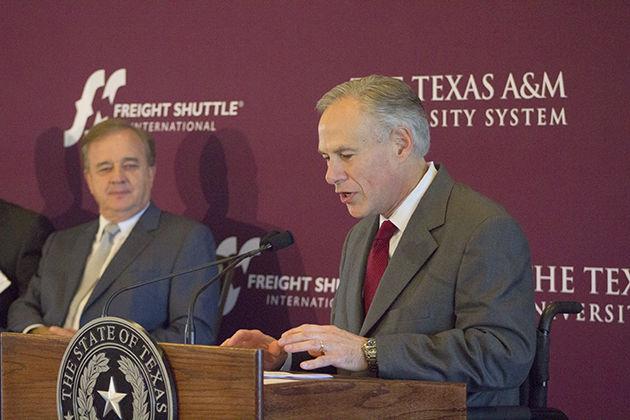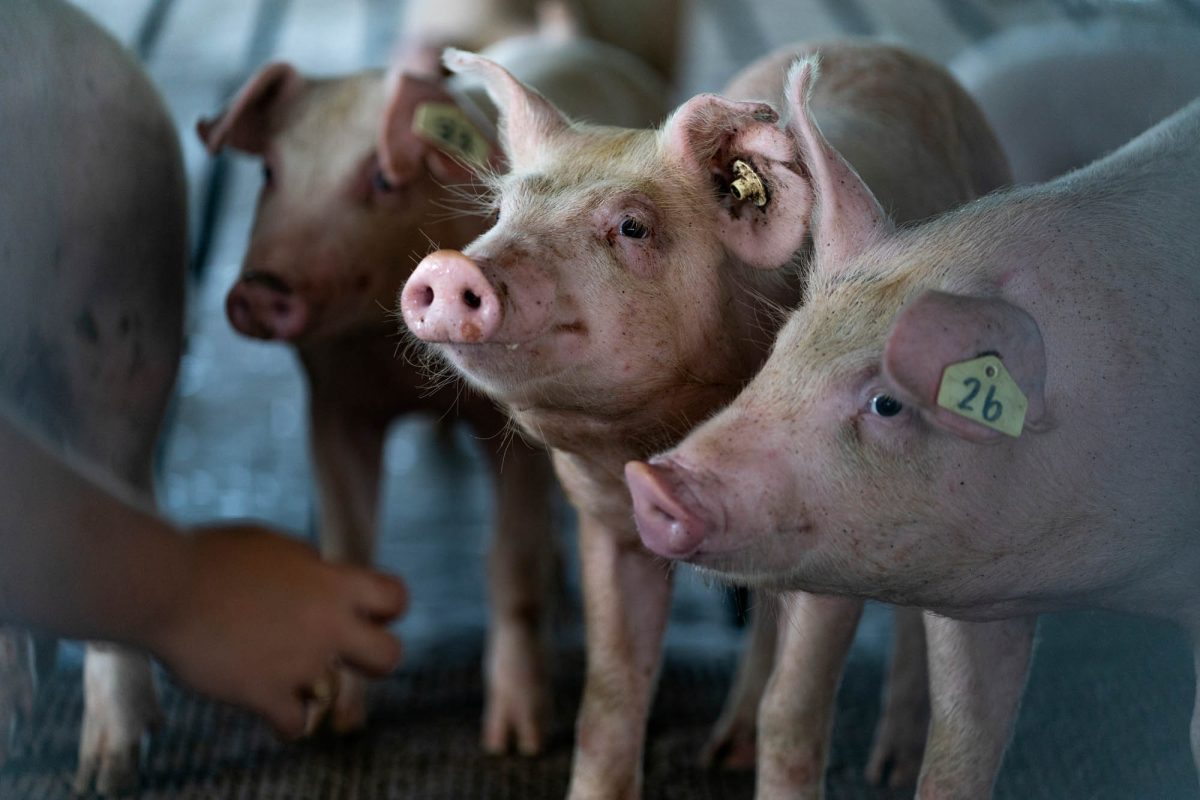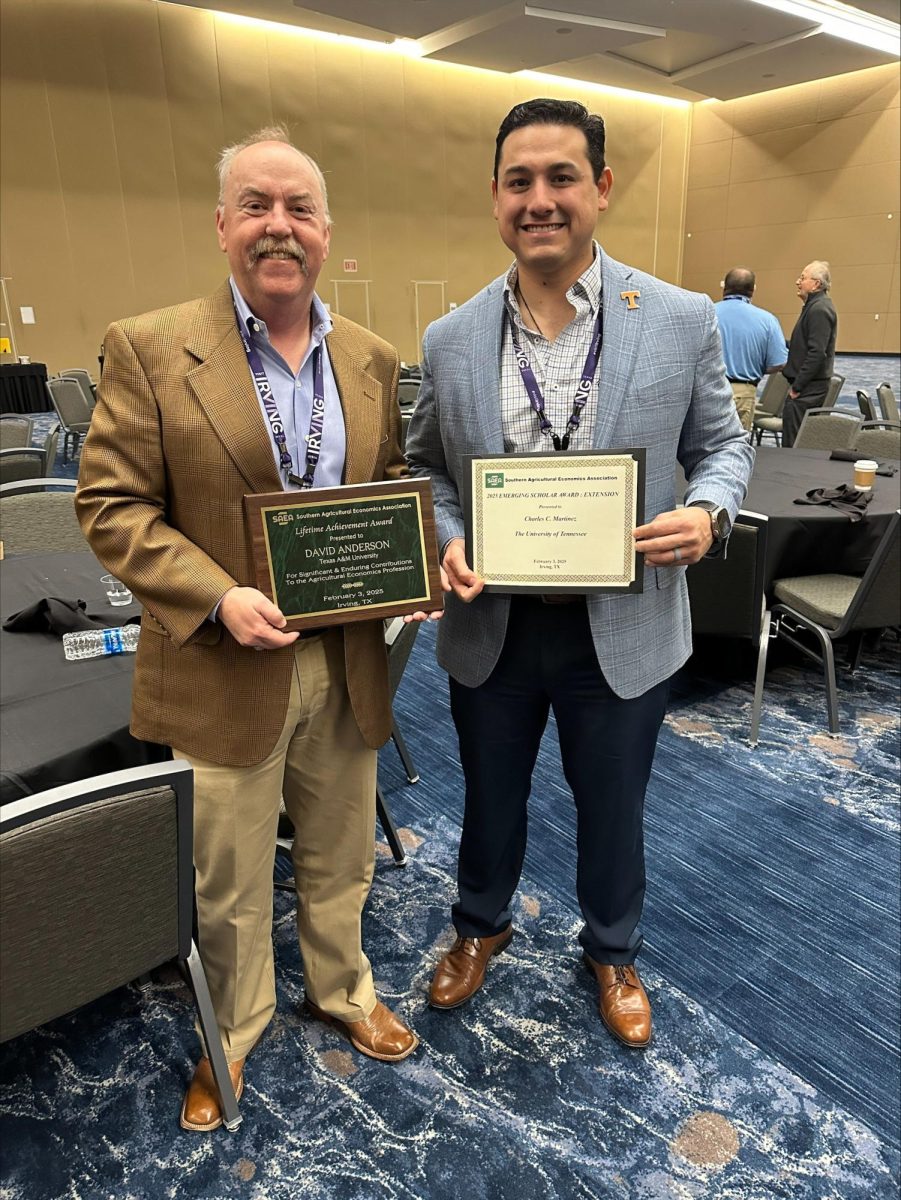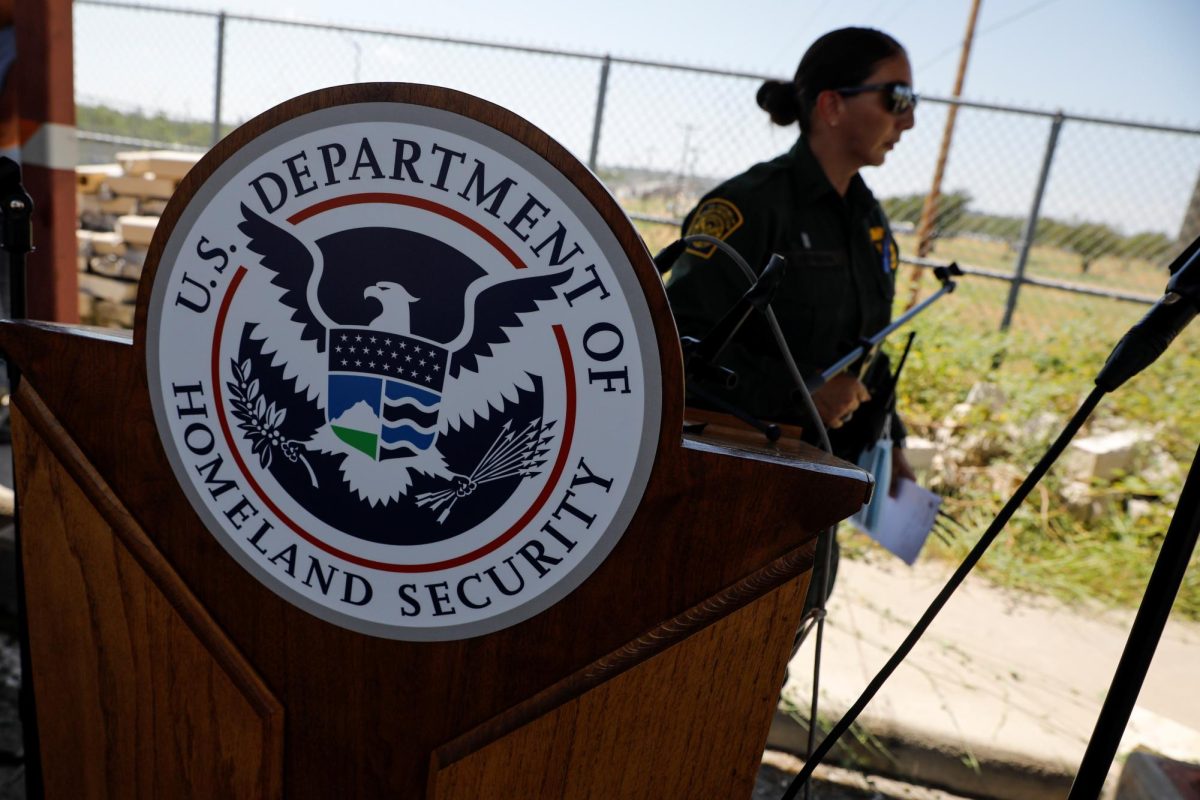Shipping companies and large cities are constantly plagued by the seamlessly never-ending traffic in major cities, but Freight Shuttle International has found a way to alleviate the congestion.
On Sept. 9, Freight Shuttle International, Texas A&M Transportation Institute and The Texas A&M University System unveiled an autonomous electric transportation system to move freight distances between five and 600 miles to an audience including Texas Governor Greg Abbott and other community leaders. The main goal of the freight shuttle project is to alleviate congestion on highways and in major port cities and provide a more eco-friendly and efficient way to move supplies across the state alongside existing highways.
Steve Roop, founder and chairman of Freight Shuttle International, started the project in 2004 and has produced a working prototype on a 34 acre lot in Bryan. Roop said they work within areas where driving trucks is inefficient.
“We seek to operate in an area under 500 miles because this is where trucks can no longer operate efficiently and make money,” Roop said. “The congestion statistics in cities and ports were disturbing, and the growth [of congestion] was even more disturbing.”
Truck drivers are expected to drop 200,000 drivers over the next decade, and the shuttle system is designed to move 70,000 pounds of freight at 70 miles per hour. John Sharp, A&M System chancellor, said A&M leads in research of freight transportation and application in the community.
“Texas A&M University is the largest research university not just in Texas but also in the southwest United States,” Sharp said. “This project is the physical manifestation of Texas A&M and everything that it offers.”
Abbott agreed with Sharp and said Texas A&M demonstrates how universities are not merely places for students to learn — they are places of innovation and forward thinking.
“Texas A&M is a model for how universities are laboratories where advancements are made that will alter the arch of America,” Abbott said. “Texas A&M used emerging technology to meet the growing demands of the 21st century.”
The prototype shuttle will be tested at the facility in Bryan on a half mile track with plans to be applied to commercial usage in Houston.
“Houston is at the front of the movement of freight through Texas,” Guenther said. “The freight shuttle system shows great promise [in] innovatively [moving] freight. It has the potential to revolutionize the industry.”
The system has received 17 patents and was completed and tested in June. Roop said the shuttle system shows how universities and the private sector can work together to solve major problems affecting a wide variety of citizens.
“This is an example of technology developed at a university that is developed for the private sector,” Roop said. “It’s an indication of university research, specifically Texas A&M, developing breakthrough technologies.”










